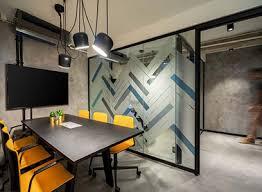Practical guide: company vs employee purchase of capital equipment
Your business is a company with several employees who wish to work from home, which the directors have agreed to. However, they need to purchase office equipment to be able to work. Are there tax breaks if the employees incur the costs, and is this the best option?

Homeworking
With hybrid working here to stay, attracting the best job applicants often requires at least some working from home. As a responsible employer wishing to comply with health and safety rules, and to ensure employees can successfully undertake their role remotely, it is vital that certain office basics, such as a computer, desk and adjustable chair, are made available (and are periodically refreshed). But who should undertake the purchase?
Assets
A key distinction, applicable to both accountancy and taxation, exists between revenue and capital expenditure. An essential element of a capital asset is its usefulness over a longer period than twelve months, although it will gradually diminish in value due to wear and obsolescence.
Capital allowances
Capital allowances (CAs) are broadly the tax equivalent of depreciation (a concept used in accountancy). Both have, as their objective, the spreading of an asset’s cost over its effective useful life, thereby reflecting reality. While depreciation is added back when computing taxable profits, CAs, for which numerous criteria and strict rules apply, are deductible.
A business has a choice as to the rate of depreciation (so long as the auditor agrees!). The rules for CAs are set by HMRC.
Most CAs claims relate to trades or property businesses; however, the list of qualifying activities does include “an employment or office” under s.15 Capital Allowances Act 2001 (CAA). CAs are only available to an employee who is undertaking UK duties.
What is plant and machinery?
Not all assets are plant or machinery under case law but, in our scenario, typical office equipment shouldn’t present a problem. The key issue is whether the asset is providing a means to undertake employment duties, and crucially not providing the structure within which they are carried on. Relief for any mechanically propelled road vehicle is subject to separate rules, usually involving a mileage allowance, to reflect the cost of using a privately owned vehicle to perform employment duties.
Necessary for employment
A major hurdle which faces any CAs claim by an employee is the requirement for expenditure to be wholly, exclusively and necessarily for the purposes of the particular employment. This basically means that the purchased assets are needed to carry out the duties of that job rather than being chosen by that particular individual who holds the employment. This concept is neatly illustrated by the denial of CAs to a vicar who incurred the cost of a slide projector himself because, although it was used wholly and exclusively for his employment, he could perform his duties without it.
As the office equipment is needed for working from home, this shouldn’t pose a problem. In particular, HMRC accepts that a computer is a necessity for office and admin work. So, given that CAs can be claimed by either the employee or employer, which is best?
Personal acquisition
Allowances. Assuming the employee overcomes the “necessary” hurdle, 100% CAs, thanks to the generous annual investment allowance (AIA), will usually be available in the tax year of purchase (no matter when in the tax year the purchase is actually made). Therefore, an amount equal to the entire cost of the assets acquired by the employee will be deductible against taxable earnings arising from the employment, unless either:
- the employee only started their employment in the current tax year, when the CAs claim must be apportioned to reflect only the months of employment with the new employer; or
- there is any private use of the equipment in the year of acquisition, when allowances should be restricted accordingly.
Keeping immediate private use to a minimum will maximise the CAs claim.
Set against earnings. Another issue to keep in mind is that the amount of the deduction is limited to the amount of the earnings which arise from the employment for which the asset is acquired. It is not possible for an allowable loss to be created, and any surplus expense cannot be set against other income.
Example. Throughout 2023/24, Alice has two employments. She earns £30,000 from her full-time employment, and £1,000 from her part-time position. She acquires equipment costing £2,000 to carry out her duties of the part-time position.
The maximum deduction that Alice can claim is £1,000, as she can only make a claim up to the amount of 2023/24 earnings from the employment in respect of which expenses were incurred. There is no possible relief against the full-time earnings.
If instead Alice had purchased the equipment for the purposes of her full-time employment, which she started on 6 July 2023, she would receive full relief for nine months’ allowances, i.e. a deduction against earnings of £1,500.
Tax rates. As income tax rates exceed the rate of corporation tax, the cash-flow benefit of the CA is seemingly greater for an individual, although this is to ignore the cash outlay required which will need to be funded privately. When the lack of any VAT reclaim is taken into account, this option looks even less appealing.
Company acquisition
Allowances. Under full expensing, available until at least 31 March 2026, companies can claim a 100% deduction in the accounting period of acquisition (unless the asset falls within certain categories which receive just 50%, e.g. electrical systems or lifts). To qualify, the expenditure must be new, unused, and not second hand. The slight catch is that any subsequent disposal will result in a taxable clawback (valued at the amount of the consideration received).
Full expensing is only available to companies. For sole trader and partnership employers, the AIA is likely to cover the expenditure.
Tax rates. Lower tax rates apply for companies (of between 19% and 25%), so the amount of tax relief received is less in cash terms than an entity subject to income tax. If the employer is VAT registered, input tax can be reclaimed on the acquisition.
Benefit in kind. The one issue which must be avoided is any taxable benefit in kind for the employees, which is expensive for them (and will seem very unfair) and renders the employer liable to Class 1A NI. Even though the previous relaxation for reimbursed office equipment expenditure was withdrawn from 6 April 2022, an overall exemption still applies.
No benefit will arise where private use is not “significant”, and the office equipment is provided for the sole purpose of enabling an employee to work from home. HMRC, at EIM21613, accepts such use is not significant where an employer’s private use policy is clear and the decision not to recover the costs of private use is commercial.
The employer should make sure such a policy has been communicated to employees, perhaps via a staff handbook, and is actually applied.
Related Topics
-
Electronic VAT return and payment due
-
HMRC checks directors’ loans are paid up
HMRC is writing to agents to check corporation tax returns for previous years are correct as it used to be possible to add a future date for an anticipated loan repayment. What’s the issue and what should you do if your advisor receives a letter?
-
Working from home tax relief scrapped in Budget
Employees who are required to work from home are currently able to claim tax relief at a flat rate of £6 per week. That's changing from 6 April 2026. What's the full story?




 This website uses both its own and third-party cookies to analyze our services and navigation on our website in order to improve its contents (analytical purposes: measure visits and sources of web traffic). The legal basis is the consent of the user, except in the case of basic cookies, which are essential to navigate this website.
This website uses both its own and third-party cookies to analyze our services and navigation on our website in order to improve its contents (analytical purposes: measure visits and sources of web traffic). The legal basis is the consent of the user, except in the case of basic cookies, which are essential to navigate this website.